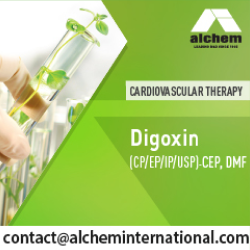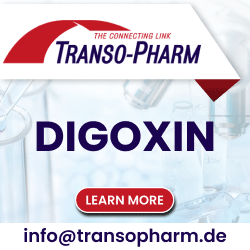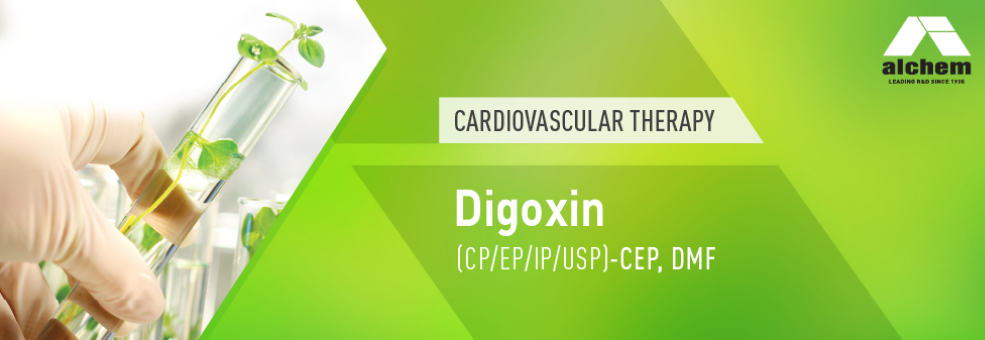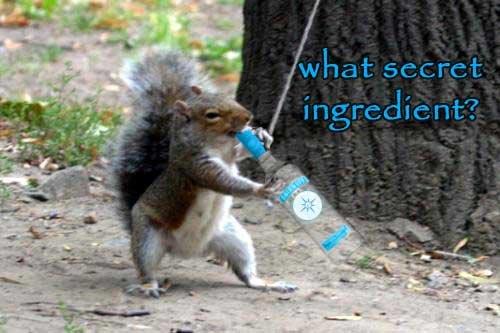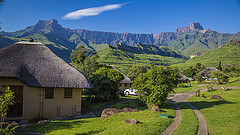Last fortnight,
Japan dominated the pharmaceutical deal making scenario, giving us the much
needed respite from compliance-related news coming from the United States week after
week.In November-end, Israel’s Teva
Pharmaceutical – the world’s largest generic drug maker – established an “unprecedented
partnership in Japan” with Japan’s largest pharmaceutical
company, Takeda. Teva will
have a 51 percent stake in the new company, while Takeda will have 49
percent.Japan is the third largest pharmaceutical market in the world and one of the fastest
growing generic markets. Through this partnership, Teva will bring its portfolio of
generic drugs to Japan. Japan government’s increased focus on genericsWith 25 percent of its population over the age of 65 years, and with one of the highest life expectancy in the world of 81.24
years, Japan is an ageing country. As a result, medical costs in Japan were 40
trillion Yen (of US $ 325 billion) in fiscal 2013 alone.The Japanese government has been promoting the
use of generics to offset the high price of branded drugs in an effort to
sustain the rising cost of its universal healthcare system. The government
aims to increase the ratio of generics usage based on volume
from the current 50 percent to over 70 percent by mid-2017, and to over 80
percent by March 2021. To achieve this target, the Japanese government plans to price
generic drugs at 50 percent of brand-name drugs from April 2016,
down from the current 60 percent, in order to encourage wider use of cheaper
drugs.Japan’s generic usage at 50 percent is a far cry from that of the United States’, which is the world’s largest pharmaceutical market with a generic usage of almost 85 percent.
Several others also eyeing the Japanese generic marketTeva isn’t the only one interested in Japan. Last year, GlaxoSmithKline bought stake
in the Japanese subsidiary of Aspen
Pharmacare Holdings in order to boost its commercial operations in the country. Glaxo
got a 25 percent
stake
in the Japanese subsidiary of Aspen in return for transferring distribution rights
to some products in Japan. When Aspen launched
operations
earlier this year, Aspen Japan set a sales targets of around 6 billion yen (US $
48.2 million) in the first year based on the sales of only five generics. Aspen
received permission to sell these generics in Japan from GlaxoSmithKline and
US-based Merck. India’s Lupin, which is the only Indian pharma company to have a presence in the Japanese generic market and has made two buyouts in Japan – Tokyo-based I’rom Pharmaceutical in 2011 and Kyowa
Pharmaceutical Industry in 2007, earns around 12 percent of its annual
revenue from Japan. Last year, Lupin announced plans to build a manufacturing
unit in India that would focus only
on the Japanese market.More recently, there has been talk of India’s leading generic manufacturer Sun Pharmaceuticals considering to buy out the brand drug portfolio of scandal plagued Novartis in
Japan. Japan has been a tough market to crackBuilding a business in Japan has proved to be a difficult task,
even for Teva. Although it made its first foray into the country through a
joint venture with Kowa in 2008, followed by a buy-out of Taiyo Pharmaceutical in 2011 (in a deal valuing Japan’s third-largest generics maker at the time at about US $ 1 billion), the financial reports for the past few years show an ongoing decline in Teva’s revenue. While fluctuations in the exchange rate have affected Teva's
revenues in Japan, in 2014, Teva's Japan revenue fell 10 percent in comparison with 2013 (3 percent in local
currency). In 2015, Teva reported a steep drop each quarter in revenue in
Japan. Teva isn’t the only one that’s seen its Japanese dreams crash. Since the 1950s, domestic firms and multinational corporations (MNCs) across sectors have come together with big schemes and high hopes to pursue joint ventures, co-promotions and other deals. But most alliances have ended in disappointment, with returns to
one or both partners falling below expectations. Mistrust
for generics and drug lag in JapanIndian drug makers and leading global generic drug producers have
several concerns about the Japanese market. Kewal
Handa, former managing director of Pfizer Limited (the Indian unit of the America’s largest drug maker) has
been quoted as saying: “It’s difficult to get higher launch prices unless the drug is innovative and cost effective. The margins are coming down and prices don’t rule high. The Japanese pharma industry has been self-sufficient with many domestic companies and they prefer their local companies over global companies”.In addition, there is mistrust for generics amid the older generation of Japanese
physicians, pharmacists and patients. This mistrust stems not only from a
cultural preference for familiar, local products but also from concerns that
generic medicines may not undergo the same efficacy and safety tests as
innovator products. There are also concerns about the reliability and stability of
generic supplies as manufacturers in Japan have frequently withdrawn older
products from the market in response to reduced sales and lower reimbursement
fees. Moreover, Japan also poses a drug lag for pharma
companies. Depending on category, there is a 5-to-10-year delay between approval of a drug in Europe or the US and
approval in Japan. For instance, Teva’s blockbuster Copaxone (glatiramer acetate), which is already facing generic
competition in the United States, has only recently been approved in Japan. Takeda is, once again, Teva’s partner to help commercialize this multi-billion-dollar drug in Japan. Our viewJapan is changing; and this policy change brought about
by the government may actually change the power dynamics among foreign and
Japanese drug makers. The recent decision at 234-year old Takeda to appoint a Frenchman as the first non-Japanese to lead the company may be a sign of how things are evolving in Japan. Are you interested in knowing more about the Japanese
pharmaceutical market? Read a detailed Credit Suisse report on
the sector or check out the Orange Book in Japan to see products that interest you and your company.
Impressions: 2818
In August, when Fortune magazine
published its latest ranking of the fastest-growing companies in the US, topping the list wasn’t a ‘sexy Silicon Valley startup’, but a little known, 73-year-old Philadelphia-based generic drug-maker – Lannett Company Inc.Last
week, Lannett announced it would buy Kremers Urban
Pharmaceuticals Inc – the US generic business of Belgian drug-maker UCB SA – for US $ 1.23 billion.With
the growth demonstrated by Lannett, coupled with the combined revenues of more than US
$ 800 million for the 12 months ended June
30, 2015, the company seems to be on track to become the next
billion-dollar generic pharmaceutical company. However, back in 2002, Lannett’s sales were only US $ 25.1 million. This week, we focus on the secret recipe
that has driven Lannett’s business success. Focus on a few old
productsLannett’s net sales in 2014 were US $ 274 million, an increase of 81 percent over the previous year. However, unlike most companies that generate sales growth through global scale and multiple products, Lannett’s results are an outcome of their extremely strong focus on a few key products sold in the United States.Lannett’s top five products accounted
for 74 percent of the total 2014 sales and two products – Levothyroxine Sodium and Digoxin – generated combined sales of almost US $ 157 million in 2014 (higher than Lannett’s 2013 sales, which were US $ 151 million). Lannett’s two-trick ponyLevothyroxine Sodium tablets remain one of the most
prescribed drugs in the US and are used by patients of various ages and
demographic backgrounds for the treatment of thyroid deficiency. Although an
old drug, it is also a narrow therapeutic index drug that saw serious and continuing
recalls in the 1990s. In 1997, the FDA mandated New Drug Applications (NDA) for this previously ‘grandfathered’ drug (a drug approved before 1938). A year later,
Jerome Stevens
Pharmaceuticals (JSP) filed and received the first NDA approval
by the statutory deadline; beating out the innovators (Abbott Laboratories and King Pharmaceuticals).In 2004, Lannett entered into an agreement with JSP for the exclusive distribution rights of three
product lines in the United States, which included Digoxin and Levothyroxine
Sodium tablets.Today, Levothyroxine Sodium tablets are produced and marketed with 12 varying potencies and are the single-largest revenue contributor for
Lannett. The franchise still
enjoys limited
generic competition, witnesses
year-over-year growth in total prescriptions and most notably has “dollar sales” gains generated by improved product pricing.The
second-largest revenue contributor for Lannett is Digoxin, another drug used in
a narrow therapeutic index to treat
congestive heart failure in patients. Lannett held only 14 percent of
the market until a few years ago and the brand leader, with 61 percent market share was Mylan. The
production of Digoxin tablets was outsourced by Mylan to Amide, a company which ran into such severe product quality and cGMP (Current Good Manufacturing Practices) problems that Mylan not only had to recall their “obese” Digoxin tablets from the market but also had their market share completely wiped out. A few months later, Sun Pharmaceutical’s US subsidiary – Caraco – had a similar issue of obese tablets which made Lannett the undisputed market leader in this niche segment. Realizing substantial price hikesRecently,
Digoxin also witnessed a price increase by as
much as 884 percent from October 2012 to June 2014, which increased its contribution to US $ 54.7 million of Lannett’s total sales of US $ 274 million in 2014. Lannett’s ability to operate in niches where competition is limited and the realization of substantial price hikes possibly led to ‘interrogatories and subpoena from the State of Connecticut Office of the Attorney General’ in July 2014, questioning the Digoxin price hikes. A firm commitment
to partnershipsPrice increases aside, Lannett’s growth has also been an outcome of a stable supply chain partnership with JSP, combined with a strong historical record of regulatory compliance. JSP has accounted for more than 60 percent of Lannett’s overall finished goods inventory purchases in the last few years.However, unlike others in the industry, who have reduced
their focus on manufacturing viewing it as a cost, rather than a value, Lannett
extended their original agreement with JSP. The agreement – scheduled to expire in 2014 – was renewed by not only giving written assurances of a minimum purchase commitment of US $ 31 million annually until 2019, but also issuing 1.5 million shares of Lannett common stock to JSP.“Our distribution agreement with JSP has been highly successful and mutually rewarding,” said
Arthur Bedrosian, Chief Executive Officer, at the time of the agreement
renewal. Lannett’s commitment to partnerships is also mentioned in its annual reports where it mentions partnerships with “Azad Pharma AG, Swiss Caps of Switzerland, Pharma 2B (formerly Pharmaseed), The GC
Group of Israel and HEC Pharm Group, as well as domestic companies, including JSP, Cerovene,
and Summit Bioscience LLC”. The joker in the packLannett’s ambitions to grow have been made clear, given that the Kremers Urban buyout was valued at almost five times Lannett’s current revenues. In addition, they beat out the China Grand group, India’s Cipla Ltd and several
other private-equity firms who were among the potential
bidders for Kremers Urban.Kremers Urban was almost sold late
last year
to private-equity firms Advent International and Avista Capital Partners for US $ 1.53 billion. The deal was called off when one of Kremers Urban’s main products – a generic version of the drug Concerta (methylphenidate hydrochloride) – underwent a change of classification at the FDA. Under the new
classification rating, its methylphenidate hydrochloride extended-release
tablets can be prescribed but may not be automatically substituted for Concerta
at pharmacy counters.Kremers Urban was
requested to provide additional information showing bio-equivalency to Concerta
for which the final results of new bioequivalence studies were submitted this
June. The contingency
payments in the Lannett deal are tied to the FDA restoring the rating and should this happen, the
landscape would once again be familiar territory for what Lannett has
experienced, and capitalized on previously with Levothyroxine and Digoxin! Our viewLannett has
grown using old-fashioned rules of doing business but also adapted to the evolving
environment. They focused
on essential products, obsessed over quality, treated their suppliers as
partners, while also ensuring that the company seizes maximum possible returns
out of an opportunity. Undoubtedly, there are several learnings in Lannett’s story for other pharma companies to emulate.
Impressions: 7593
Africa represents the last geographic frontier where high growth is still achievable. Over the past two decades, Africa has emerged from a troubled history to become one of the world’s fastest growing economic regions, states a McKinsey report (Africa: A continent of opportunity for pharma and patients). A
quick glimpse of the gold mine in AfricaAfrica has one of the highest number of notified cases for diseases like AIDS and tuberculosis (TB), which provides sizable opportunities for the industry given the enormous size of the patient population. The South African government has plans of scaling
the number of people getting treatment for AIDS from
3 million to 4.6 million by the end of 2016. In December 2014, the government issued an $860
million tender for supply of AIDS drugs and only
four companies were the main beneficiaries! The African’s growthAfrica’s GDP (Growth Domestic Product), already the size of Russia’s, has a working age population, which is already 30% more than that of Europe and the size is expected to double in the next five years. Africa’s pharmaceutical economy has been forecasted to grow at an estimated 9.8% compounded growth when compared with 2% for the United States and 1% for Japan. While the size of the African pharmaceutical economy is significantly smaller than established markets, by 2020 the total size is expected to be between $44 billion and $66 billion.Although Africa is a big continent, McKinsey
simplifies life by suggesting that companies should focus on specific countries,
as more than 2/3 of the African growth has come from just 10 out of 54
countries. - Africa’s top 10: Algeria, Egypt, Kenya, Ivory Coast, Libya, Morocco, Nigeria, South Africa, Sudan, and Tunisia.In addition, the strong support of
governments advocating the use of generic drugs, along with physicians and
pharmacists getting used to prescribing generics, has the industry booming. The
generic business in Algeria and Morocco is forecasted to grow at a minimum growth
rate of 22%. Africa?
How does one get started?South Africa is currently embroiled in an
ongoing political crisis caused by severe drug
shortages. Lifesaving drugs for AIDS and TB along with common antibiotics
like benzyl
penicillin, heart medicine digoxin,
anti-asthma salbutamol
inhalers, anti-epileptic sodium
valproate, vaccines etc., have all encountered shortages.“The shortages at district hospitals have forced doctors to give medication to some patients, leaving others to suffer in agony. Paracetamol, a very basic painkiller, is also in short supply.”, reported news channel,
News24.With over 150
product lines in shortage, the South African government has taken radical
measures like flying
in 20 key medicines, accelerating the approval process and automatically allowing registration of suppliers who are WHO prequalified to overcome the 15 month approval timeline for drug applications. South African regulators will continue to inspect all
local and some international API sites despite relaxing facility assessment
rules last week. Our ViewConcerns
raised by the South African media, regarding API sourcing
constraints, delays in formulation manufacturing or managing changing product
demand can easily be addressed if the pharmaceutical industry decides to
develop their African business.However, not everything will be smooth
sailing since Africa faces challenges of civil unrest, dependency
of countries on oil prices, concerns over non-payment of bills and outbreaks of
epidemics like Ebola. McKinsey also
states that talent is scarce and finding a reliable local partner is critical
to success.Concerns aside, companies like Aspen, Hikma, Mylan, Cipla
Medpro, have already made significant inroads into the African market. While India’s Cipla envisions a billion
dollars from Africa by 2024 and Canada’s Valeant is in advanced talks to acquire Egyptian drugmaker, Amoun
Pharmaceutical Co. for about $700-800 million, the African opportunity has already started getting attention.For those on the sidelines, a lists of
products currently in shortage, is available
online and the only question is who bets bigger on Africa first!
Impressions: 2577
Canada based, Concordia Healthcare continued their buying spree of old, established drug brands by announcing the acquisition of commercial assets of Covis Pharma S.a.r.l and Covis Injectables, S.a.r.l for US $1.2 billion in cash. The Covis deal comes right after Concordia’s $329 million purchase of Donnatal (belladonna alkaloids, phenobarbital) in May 2014.
Concordia’s buy makes them add to their existing portfolio, 18 high-margin, branded and authorized generic pharmaceutical products from private-equity backed, Swiss-based, Covis.
Authorized and branded generics of the following drugs are all part of the deal:
Nilandron®, for the treatment of metastatic prostate cancer
Dibenzyline®, for the treatment of pheochromocytoma (neuroendocrine tumor)
Lanoxin®, for the treatment of mild-to-moderate heart failure and atrial fibrillation
Plaquenil®, for the treatment of lupus and rheumatoid arthritis
Lanoxin, Dibenzyline and Plaquenil have been on the market in the United States for over 60 years
Covis 2014 revenues were between US$140 and $145 million with a 90% gross margin, while 38% of approximate Concordia’s US$ 120 million revenues came from Donnatal.
In their conference call, Concordia supported paying almost 8.5 times revenues with the following rationale:
Lanoxin (Digoxin) – API and Finished Dosage manufacturing challenges have resulted in market supply shortages and the potential FDA implementation of NTI (Narrow Therapeutic Index) for Lanoxin can represent a future upside to this business.
DiBenzyline (Phenoxybenzamine Hydrochloride) – is the preferred agent of choice with no generic competition. The opportunity exists to develop new orphan indications.
Plaquenil (Hydrochloroquine) – API supplier to Ranbaxy, which held 90% market share, exited the market in 2014 due to a voluntary market withdrawal and currently competitors are not positioned well to meet the existing demand.
Nilandron (Nilutamide) – absence of generic competition due to strict ANDA guidelines coupled with excellent payer coverage.
Covis’ 2014 revenues contributions were:
Lanoxin 25%
Dibenzyline 17%
Nilandron 16%
Plaquenil 15%
So while pharmaceutical companies are looking at next generation molecules to grow their revenue streams, a look back in time may provide some worthwhile opportunities.
Impressions: 4865
Unless you are like Voltaire and think that “The art of medicine consists of amusing patients while nature cures the disease”, you will be thrilled with the new drugs approval (NDAs) list of the FDA: about 40 new drugs in 10 therapeutic areas! It has been 18 years since the FDA approved so many new drugs, so let’s quickly take a tour at the Olympic podium:
OLYMPIC PODIUM
The golden medal comes to AstraZeneca with 4 NDAs: Farxiga (diabetes), Movantik (constipation), Lynparza (ovarian cancer) and Myalept (lipodystrophy, also called fat reduction, which is common in patients with HIV and AIDS).
Then come the silver medals with 3 NDAs each:
Biogen Idec with Alprolix (hemophilia B), Eloctate (hemophilia A), Plegridy (multiple sclerosis).
Lilly with Cyramza (gastric cancer), Jardiance (diabetes), Trulicity (diabetes).
Merck&Co with Zontivity (coronary artery disease), Belsomra (insomnia), Keytruda (melanoma).
And the bronze medals with 2 NDAs each:
Boehringer-Ingelheim with Striverdi Respimat (chronic obstructive pulmonary disease), Ofev (idiopathic pulmonary fibrosis).
Cubist with Sivextro (skin infection), Zerbaxa (urinary and abdominal infections).
Gilead with Zydelig (leukemia), Harvoni (hepatitis C –“first combination pill approved to treat chronic hepatitis C virus genotype 1 infection and the first approved regimen that does not require administration with interferon or ribavirin”).
Novartis with Xtoro (acute otitis externa), Zykadia (lung cancer).
THERAPEUTIC AREAS
In terms of therapeutic areas, infectious diseases come first with 27% of the NDAs, followed by cancer with 18% and then rare diseases with 11% according to Forbes. Knowing that a disease is classified as ‘rare’ when it affects 200,000 people maximum in the US, the pharmaceutical industry and the FDA have done a fantastic job because overall it is 25 millions American whom are concerned by orphan diseases. And how many more around the world?
According to EvaluatePharma, in 2020 orphan drugs are expected to account for 19% of the total share of prescription drug sales excluding generics, reaching $176 billion in annual sales in America alone.
Here are the main NDAs 2014 for rare diseases:
Amgen with Blincyto (Philadelphia chromosome-negative precursor B-cell acute lymphoblastic leukemia- leads to cancer).
Anacor with Kerydin (fungal infection).
BioCryst with Rapivab (influenza- infectious disease caused by the influenza virus).
Biomarin with Vimizim (Morquio A syndrome- the body is missing or doesn't have enough of a substance needed to break down long chains of sugar molecules).
Boehringer-Ingelheim with Ofev (idiopathic pulmonary fibrosis).
Chelsea with Northera (neurogenetic orthostatic hypotension- often associated with Parkinson’s disease).
Hoffman la Roche with Esbriet (idiopathic pulmonary fibrosis).
Johnson & Johnson with Sylvant (multicentric Castleman’s disease- involves hyper activation of the immune system).
Paladin with Impavido (leishmaniasis- disease caused by protozoan parasites).
Sanofi with Cerdelga (Gaucher’s disease- genetic disease in which fatty substance accumulate in cells and certain organs).
Spectrum with Beleodaq (non-Hodgkin lymphoma- group of blood cancers that includes any kind of lymphoma except Hodgkin's lymphomas).
Takeda with Entyvio (ulcerative colitis ; Crohn’s disease- inflammatory disease that affects any part of the gastrointestinal tract from mouth to anus)
Valeant with Jublia (fungal infection).
Vanda with Hetlioz (non stop 24 hour sleep wake disorder).
The huge impact after the release of the 2014 NDAs list was the pharma exchange-traded funds flared up (Nasdaq Biotechnology Index and S&P 500 Health Care Index 34 percent and 23 percent respectively.
However, finance is not everything, as we have all learned during the 2008 financial crisis, and NDAs are not the only conditions for a new strategy to success anymore, as proven by a lot of pharmaceutical companies in the past years who haven’t achieved enough revenues despite NDAs.
It seems that pricing is going to be key as competition is becoming fiercer. Look at the 2014 NDAs batch for anti bacterial drugs to treat skin infections; 3 brand new drugs for this year only.
Cubist with Sivextro
Durata with Dalvance
The Medecine Companies with Orbactiv
Same for the idiopathic pulmonary fibrosis as we just saw in the rare diseases approval list above: 2 NDAs for 2014. According to Fierce Pharma, there are 8 therapeutic areas where competition is going to be even fiercer in the future: hepatitis C, diabetes, cholesterol, hemophilia, hemo-oncology, psoriasis, melanoma and obesity.
And it is not like patents are not going to continue dropping; generics represent now more than 40% of the products sales. Moreover, premium prices following NDAs have been implicating confrontations with insurers and governments in regards to diabetes and respiratory drugs in the past.
Therefore, new tactics have to be found!
AbbVie offered their new anti hepatitis C drug, Viekira Pak, at a discount price to Express Script (the largest pharmacy benefit management organization in the United States) for an exclusive distribution. Even if Viekira Pak is said to be a less convenient dosing regiment when compared to Gilead’s anti hepatitis C drug (Sovaldi), the deal was closed as Sovaldi’s premium price actually chocked the payers. It is a perfect move for AbbVie, who just lost their patent on one of their main drug: Humira (rheumatoid arthritis).
Biotech are said to be an excellent area for successful strategy as well.
If there is more success at R&D projects (as it looks to be the case in the biotech field) then R&D department cost less and the overall financial risk should be lowered.
Here are the main NDAs 2014 for biotech/ cancer:
Baxter with Obizur (hemophilia).
Biogen Idec with Plegridy (multiple sclerosis), and Alprolix and Eloctate (hemophilia).
Celgene with Otezla (psoriasis)
Gilead with Zydelig (anti-cancer treatment).
Helsinn with Akynzeo (emesis- prevent nausea and vomiting caused by cancer drug treatment).
Salix with Ruconest and Pfizer with Trumenba (meningitides type B).
Bristol-Myers Squibb with Opdivo (melanoma) and Merck & Co with Keytruda (melanoma as well), which work by blocking a protein called Programmed Death receptor (PD-1), are the first in a coming wave of immunotherapies and are said to have the potential of generating more than 30 million USD/ year.
So in case all these new strategies don’t work and definitely become a financial matter only instead of a medical focus to help the world to live a little better, don’t forget to “always laugh when you can, it is cheap medicine” as George Gordon Byron liked to advise.
Impressions: 2361







